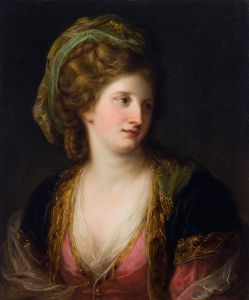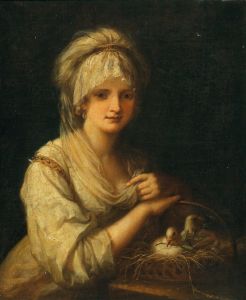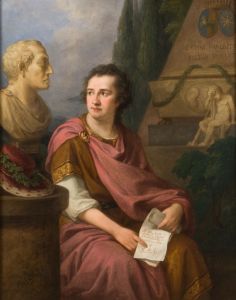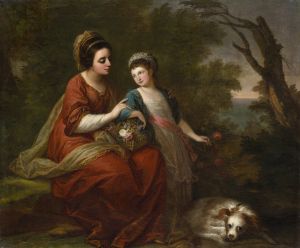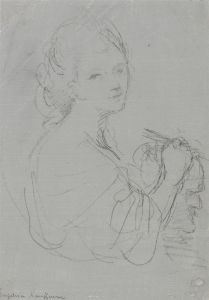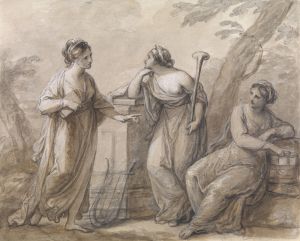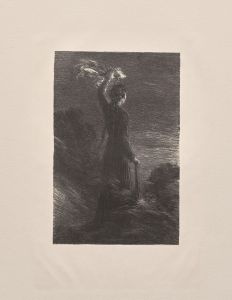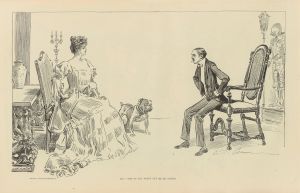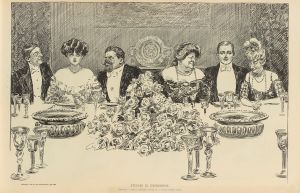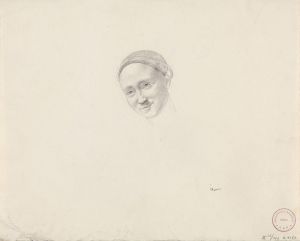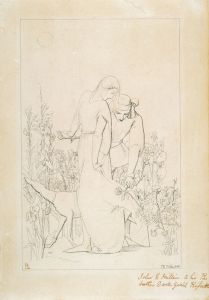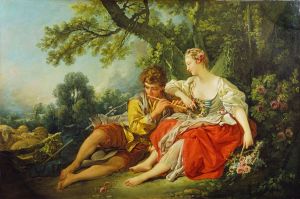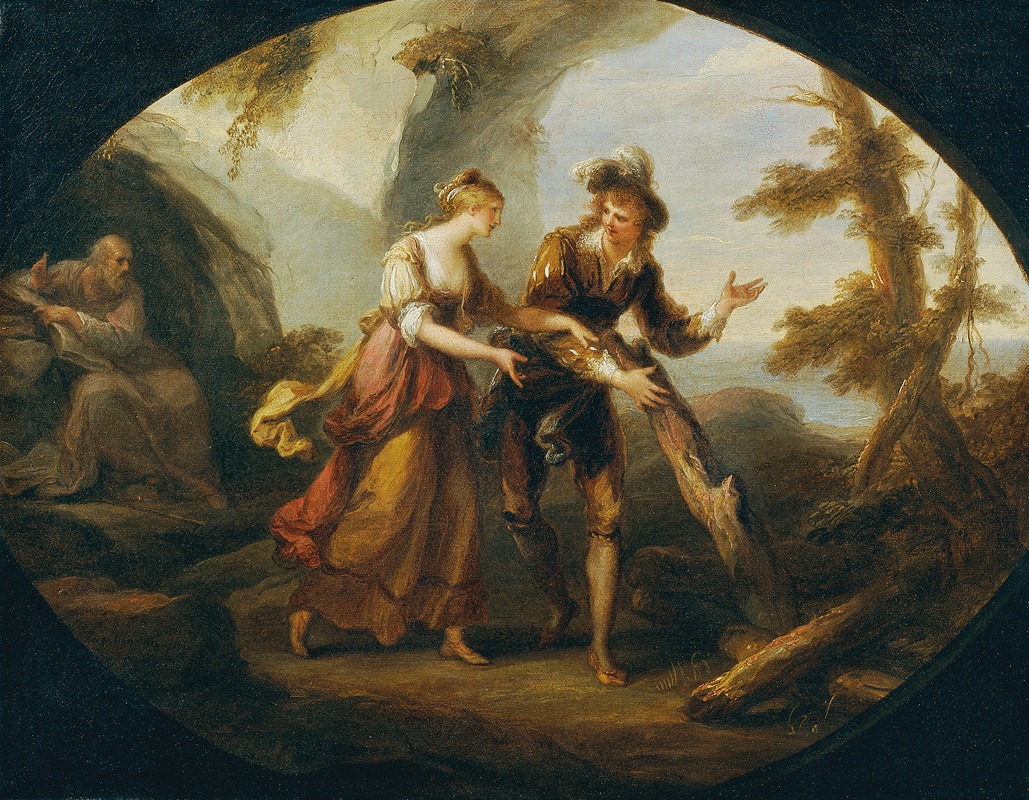
Miranda und Ferdinand
A hand-painted replica of Angelica Kauffmann’s masterpiece Miranda und Ferdinand, meticulously crafted by professional artists to capture the true essence of the original. Each piece is created with museum-quality canvas and rare mineral pigments, carefully painted by experienced artists with delicate brushstrokes and rich, layered colors to perfectly recreate the texture of the original artwork. Unlike machine-printed reproductions, this hand-painted version brings the painting to life, infused with the artist’s emotions and skill in every stroke. Whether for personal collection or home decoration, it instantly elevates the artistic atmosphere of any space.
Angelica Kauffman (1741–1807) was a Swiss-born Neoclassical painter who gained significant recognition during her lifetime for her portraits, historical paintings, and allegorical works. One of her notable works is Miranda and Ferdinand, which depicts a scene from William Shakespeare's play The Tempest. This painting reflects Kauffman’s interest in literature and her ability to translate dramatic and emotional moments into visual art.
In Miranda and Ferdinand, Kauffman portrays the two titular characters from The Tempest in a tender and romantic moment. The painting captures the scene where Ferdinand, the shipwrecked prince, and Miranda, the daughter of the magician Prospero, meet and begin to fall in love. Kauffman’s interpretation emphasizes the innocence and purity of their relationship, aligning with the ideals of Neoclassicism, which often celebrated themes of virtue, love, and moral integrity.
Kauffman was known for her refined and elegant style, and this work is no exception. The composition is carefully balanced, with the figures of Miranda and Ferdinand placed prominently in the foreground. The artist’s use of soft, harmonious colors and delicate brushwork enhances the romantic atmosphere of the scene. The background, likely featuring elements of nature, serves to complement the emotional tone of the painting without overwhelming the central figures.
As a female artist in the 18th century, Kauffman achieved remarkable success in a male-dominated field. She was one of the founding members of the Royal Academy of Arts in London in 1768, a significant accomplishment that underscored her talent and reputation. Her works often drew inspiration from classical literature, mythology, and history, and she was highly regarded for her ability to convey complex emotions and narratives through her art.
The exact date of Miranda and Ferdinand is not definitively recorded, but it is consistent with Kauffman’s broader body of work, which frequently explored literary and theatrical subjects. The painting is an example of her skill in blending literary themes with the aesthetic principles of Neoclassicism, making it a valuable contribution to the art of the period.
Today, Miranda and Ferdinand is appreciated as a testament to Kauffman’s artistic achievements and her ability to bring Shakespearean drama to life through her distinctive style. The painting is held in a private collection or museum, though specific details about its current location or provenance may not be widely documented.





